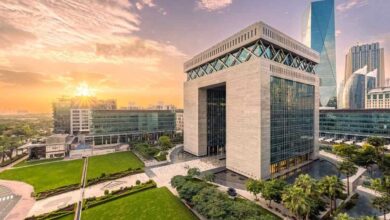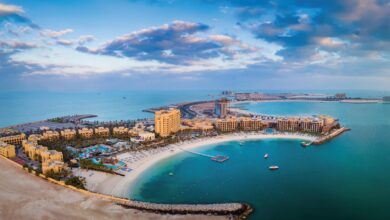
Real estate markets are in flux, so why is Dubai’s property scene booming?
Real estate is a unique asset class that distinguishes itself from other investment options such as gold, stocks, cryptocurrencies and derivatives. It offers stability even in the face of price fluctuations, making it an attractive choice for investors who, over the years, have experienced significant benefits from rising prices. This growth has allowed investors to diversify, benefit from long-term appreciation and establish an additional stable income channel.
To illustrate this point, in 2021, the global housing market achieved an impressive value of nearly $28,917.7 billion. Projections indicate that it is expected to reach almost $4,923.3 billion by 2031. This growth can be attributed to the economic fundamentals of the demand and supply equation: globally, demand for housing is growing consistently, with the world population increasing and urbanisation fuelling a drive towards favoured hotspots. At the same time, real estate represents owned, physical spaces or parts of land – and land is limited. With demand surging and supply being limited, prices rise.
Government initiatives purposed to attract real estate investments add to this. The US and Australian governments offer loans to people at lower rates. Canada provides golden visas to foreigners who want to invest in real estate. Tourist hotspots like Dubai, France and Malaysia also offer incentives to attract international investors.
This has been marked by the continuation of volatility from late last year, with fluctuating rates and a dubious economic outlook affecting investor sentiments. The persistent rate hike cycle, amplified by issues within the banking sector, has brought an extra dose of instability to real estate lending. This has triggered a tightening of lending standards across most global markets, placing added strain on debt issuances in an already strained market. Although rate hikes have influenced real estate lenders broadly, the onset of banking failures has predominantly affected banks, who now face concerns from regulators about commercial real estate exposure.
:quality(70)/cloudfront-eu-central-1.images.arcpublishing.com/thenational/USEJ3GWXGVB7TPUWYQPWIQ2BJM.JPG)
In Europe, a slowing housing market and limited supply have worsened the demand-supply gap. However, difficult financing circumstances have led to further dips in investment volumes. Meanwhile, the Asia Pacific region maintains its increasing appeal in the residential sector, despite slower activity in Japan due to a shrinking pool of foreign buyers and larger bid-ask spreads, leading to an overall decline in regional volumes.
Dubai stands out among other notable property investment geographies as a tax-free location, a factor that makes it particularly attractive. This year, investor sentiment in Dubai remains outstandingly positive and the residential market continues to experience an impressive upward trend, with values increasing by 5.6 per cent in the first quarter. This marks the ninth consecutive quarter of growth, driven by strong demand for luxury second homes and the city’s emergence as a global luxury hub.
The UAE Central Bank kept its benchmark borrowing rate, its base rate for the overnight deposit facility, at 5.15 per cent. The US Federal Reserve, which increased its benchmark rate for the tenth consecutive time last month, maintained its range of 5 per cent to 5.25 per cent.
Based on these sentiments, the hike in interest rates is expected to have a minimal impact on the real estate industry. Additionally, in the UAE, the absence of property taxes, the high rental yields, the low overall price per square metre and the implementation of residency and golden visa programmes, among a wide array of other investment-conducive initiatives, will continue to attract buyers, driving growth.
Dubai has managed to fare relatively well under inflationary circumstances, primarily due to rapid development in both the oil and non-oil sectors
In addition, the UAE government brought in measures to mitigate the effects of inflation, such as raising mortgage rates. However, this is just one aspect of the larger picture. Dubai benefits from significant inflows of high-net-worth individuals seeking luxury, high-priced properties, largely driven by its thriving tourism sector. Increased oil production and proactive reform measures have enhanced economic activity in non-oil sectors. These factors collectively support Dubai’s economic growth, helping absorb inflationary impacts.
In contrast to other major economies, including the US, Brazil, Singapore and Turkey, which have struggled with inflation, Dubai has managed to fare relatively well under inflationary circumstances, primarily due to rapid development in both the oil and non-oil sectors.
Although inflation indisputably generates an upward trajectory for real estate property prices, a comprehensive analysis uncovers a compelling correlation. Historical property prices and inflation data reveal an absorbing trend: property value appreciation consistently surpasses inflation rates. As inflation degrades the purchasing power of consumers, a shift in focus is evident, with more individuals buying rental properties as investments, as opposed to end-users purchasing homes to live in.
However, the evolving real estate scenario in Dubai presents a counter-narrative. Despite escalated sales prices and rising interest rates, an emerging group of tenants are transitioning into end-user buyers to circumvent lease renewals and relocations. More importantly, they want to spend less on monthly bank instalments than they would on monthly rental payments, with them than owning a valuable tangible asset, that with substantial capital appreciation once it is paid off, they can then either live in for free, rent out for income, or sell for a sizable lump sum.
Enhanced visa regulations, the favourable business sentiment, and the safe, luxurious lifestyle enabled by the UAE propel the strong market performance, enticing more international buyers to make the Emirates their home and preferred investment destination. The issuance of thousands of golden visas, the advent of retirement visas, and an array of property-linked visas are increasingly attracting residents and investors. Dubai’s projected population growth across various income segments aligns with its 2040 target of 5.8 million residents, fostering long-term demand.
In times of international predicaments and turmoil, Dubai shines and attracts investment. Be it Covid, wars or financial crises – when other countries go through difficult times, Dubai serves as a haven for investment and continues to offer safety and luxury. The current level of global inflation is yet another case that exemplifies the emirate’s resilience, and this fact will continue to drive an inflow of investment. Seen in this light, global inflation is an opportunity for the UAE rather than a problem.





